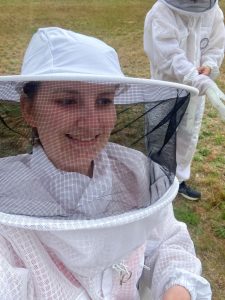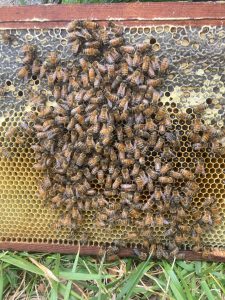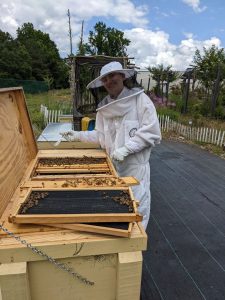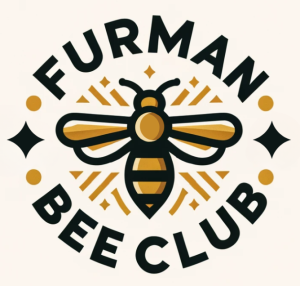Bees are essential to the environment. Bees especially are important pollinators because they visit a variety of plants, they are not picky. They pollinate frequently because of the nectar provided by plants that has nutrients for them and their hive. Other pollinators are vital as well, bees just contribute quite a lot to the pollination game (Smithsonian Gardens).
The impacts of bees are beneficial to humans as well. They help the environment thrive which helps us survive. The plants they pollinate act as carbon sinks that keep our atmosphere cleaner. Without pollination, it would be much harder to reproduce for plants, and the air would be considerably worse. An article in science direct writes that “around 35% of global crop production is dependent upon animal pollinators.” They keep agriculture afloat. As for beekeeping, the honey produced benefits the economy by harvesting and selling honey.
While beekeeping is beneficial to humans, there is often a question about benefits to the bees. In an article in Meadowia, Katie Piercy writes “most beekeepers aim to leave enough honey within the hive that the bees can still survive the winter, which is why bees store the honey in the first place. Many also give the bees sugar substitutes if the honey remaining is not enough to get the colony through this period.” I have talked with other beekeepers who tell me that the honey is more of a byproduct to the bees, so harvesting it (while ethically leaving enough for them) does not harm them. Many beekeepers use smoke to calm down the hive before inspecting, but this also does not harm them. A student at Furman, who has taught me a lot about the practice, said that the smoke sends a signal to the bees to protect the hive from fire. This calms them down so that they are not as aggressive and does not cause them harm.
Furman started my beekeeping journey. I have been interested in bees for many years, but I was not able to connect with any hives until I came here. I did not have much time in my senior year of high school, when I got serious about wanting to do beekeeping. I also did not want to take on the responsibility when I knew I would be leaving soon for college. Before moving in, I found out that there is a Bee and Pollinator Club on campus and got very excited about the opportunity to work with bees up close. My first hive work experience was in the spring of 2023 with the club and from there I just continued to grow my interest. The summer of 2023, I worked with a local beekeeper in my hometown of Athens, GA and learned much more about the process. When I came back to Furman this school year, I became the president of the Bee Club and things have started to run smoothly. The Bee Club is all about education and then practice in the actual hives, and I am learning along with the members. Without being here at Furman, I would not have the opportunity to work with bees so closely, something I have been looking forward to for a long time. Living in the Greenbelt is especially helpful because I am close to the storage area in the garage, and I have convenient parking so that I can drive to the hives at the solar farm when necessary. Once I live on my own, I would love to own bees, once I know more about how to do so and am able to.




Works Cited
The Why, What, When, Where, Who, How of Pollination. Smithsonian Gardens. (2021, October 25). https://gardens.si.edu/gardens/pollinator-garden/why-what-when-where-who-how-pollination/
Sillman, Jani, et al. “Contribution of Honeybees towards the Net Environmental Benefits of Food.” Science of the Total Environment, vol. 756, Jan. 2021. EBSCOhost, https://doi-org.libproxy.furman.edu/10.1016/j.scitotenv.2020.143880.
Piercy, K. (2023, August 1). Is Beekeeping Cruel? Does it Harm Bees?. Meadowia.com: Celebrating Meadows & Wildlife. https://meadowia.com/is-beekeeping-cruel-does-it-harm-bees/



